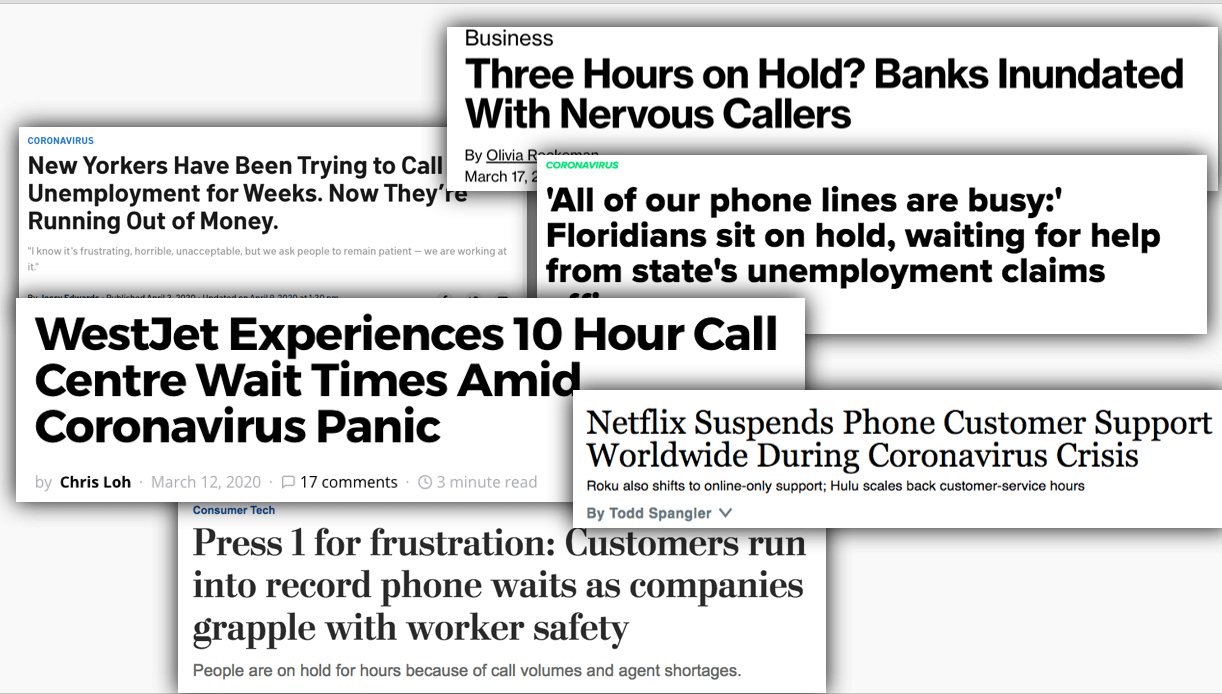We’ve all seen the stories: Customers left on hold for hours, sometimes unable to get through for days. How should we interpret them? Often these articles take the view that companies are letting down their customers, or governments are letting down their citizens.
In that way, the stories fall into a familiar emotional bucket: A callous bureaucracy is too unprepared, stingy, or incompetent to provide good service.

And while it’s true that many organizations are guilty of those things — and we should not give them a pass — it’s also true that you should not judge their response in a crisis with the same yardsticks you use for day-to-day performance. To grade a contact center on handling a crisis, you really have to judge it in context.
If all I know is that a company had 10 hour hold times, I don’t know if that’s an alarming number or not. Maybe if they got through a million canceled flights with only a hundred agents, that’s a stellar result. Or perhaps they botched it entirely and should have been able to do it without hold times stretching over 1 hour. We have no idea.
But the problem is deeper. Even with all the data, we don’t have a framework for measuring success under a crisis.
How do you measure success in a crisis?
Ours is an industry obsessed with yardsticks. Virtually every call center marches under the banner of “answer 80% of calls in under 20 seconds” or something similar. Read this article about Arise to see how extreme it can get. And yet, we have a blind-spot around the crisis scenario.
That makes it harder to celebrate cases like New Zealand’s response in March to the initial Covid wave. Yes, there were long hold times, but you can see an outright success in the context of the demand they faced.
For a deep-dive into what happened in New Zealand’s government call center and lessons learned, check out my TADSummit presentation.
Complaining that hold times are long because of high demand is the lazy way out. The tougher question is: What would a better system be? #cctr Click To Tweet
So, in answer to the question, “How did contact centers do in the pandemic?” we don’t have anything tangible to discuss beyond sharing anecdotes. Why is that?
Think about how we monitor and report on other infrastructure during a crisis. When there’s a hurricane, we get reports on how many flights are canceled. When there’s an earthquake, we get information on which bridges fell. With a power outage, exactly how many homes were affected?
We are living through a pandemic where mass communication is essential: companies to customers, governments with their citizens. Contact centers are part of the infrastructure that is being stress-tested by this crisis. Yet, we can’t really assess how we’re doing.
We need to face tough questions. Of course there will be occasions where agent capacity is overwhelmed. If not this crisis, then the next one. We shouldn’t treat it as uncharted territory.
What should happen if your call center has an unexpected situation where demand doubles overnight? How about a 10x demand event? Is your obligation different in the latter case? What’s the right way to treat callers if you can’t get to them today, or maybe not till next week? How will you know you’ve done it well? Surprisingly little has been written on this topic.
So, back to those headlines. Complaining that hold times are long is the lazy way out.
The tougher question is: What would a better system be?

The Executive Guide to Improving 6 Call Center Metrics
Measuring and improving call center metrics can be a pain point for executives. Download our free guide to help you improve 6 key call center metrics.
